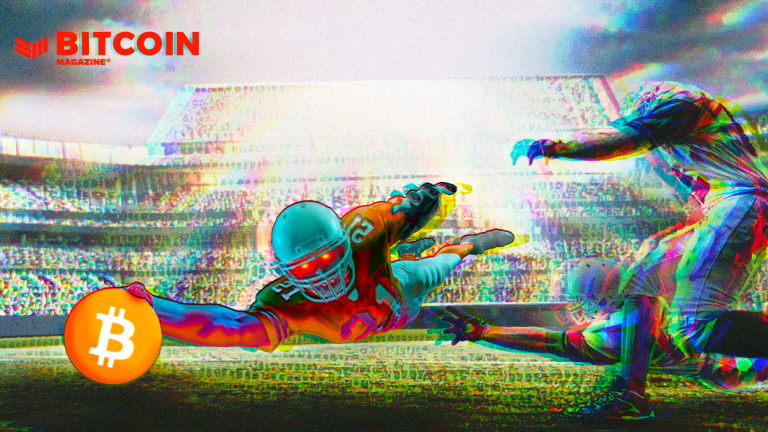The crypto market saw a significant decline in 2022, but not all sectors faced the same trajectory. In 2022, the funding market has shown to be very active, with capital flowing into the GameFi industry at an unprecedented rate. The overall Q1 funding amount of the GameFi rose 194.19% year on year, with start-up game projects being hotly pursued by capital and the industry developing positively.
In its report, Footprint Analytics, the visual data analytics platform, and DeGame, a Web 3.0 NFT game infrastructure platform, have provided a comprehensive look at the GameFi industry’s performance in the first quarter of 2022.
In it, they cover:
- Overall market data and trends
- GameFi-related performance on various blockchains
- Investment and financing developments,
- A detailed look at STEPN, the quarter’s biggest project
Here are the key points that you must know from the happenings of the GameFi industry in the last quarter.
I. The GameFi market was stable
The total market capitalization of all GameFi tokens fell by 15% in Q1 due to market trends, which correlated with fluctuations in the BTC market cap. However, the total number of GameFi users remained roughly the same as in 2021 Q4 at around 1.2 million.

The total transaction volume of GameFi projects across all chains in Q1 was $6.322 billion. The top three chains by transaction volume from GameFi were WAX, Hive, and BSC. WAX is in the lead, accounting for 77.7% of the total game volume of each chain combined.
The daily trading volume peaked at $205.8 million on Jan. 9 and declined after.
II. Many chains remain undiversified
In Q1, most chains continued to be dominated in terms of users by a single large, successful project. BSC and Ethereum are exceptions to this trend and have relatively even distribution.

Here are some of those unbalanced ecosystems and their respective head games:
Wax: Alien Worlds (100% of total users)
Hive: Splinterlands (99.9% of total users)
Ronin: Axie (100% of users)
EOS: Upland (94.1% of users)
III. 2022 Q1 Game Token Liquidity
In Q1 2022, 20% to 30% of tokens listed on centralized exchanges were GameFi project tokens, and the trading volume of the head game tokens is extremely high, occupying the majority of the market share.

The project with the highest daily token trading volume was STEPN, whose governance token, GMT, had an average daily trading volume of nearly $100 million and was the best performing chain in terms of token liquidity realization. It was followed by Gala Games, The Sandbox, and Decentraland.
IV. 2022 Q1 GameFi Investment Jump by 194.19% YoY
The GameFi market saw a 194.19% increase in Q1 funding compared with the data last year and a 40.78% decrease on a season-over-season basis. Out of all project categories, indie games—those video games typically created by individuals or smaller development teams—were at the forefront in terms of both the number and amount of funding than any other category of GameFi project.

There were more seed rounds than any other kind in Q1 for GameFi, whereas strategic rounds raised the most funds. Projects on Polygon received the most funding in amount and quantity, and Animoca Brands was the most active investment institution.
V. STEPN dominated the quarter with innovative gameplay
STEPN, a move-to-earn GameFi app built on Solana, officially launched in January and reached 21K daily and 66K monthly user activities in February, which is super fast.
Since its launch in January, the number of new daily top-up users has been growing, and the growth rate has accelerated, with the current daily top-up users at around 5-8K. Official wallet GST daily incoming and outgoing amounts reach 10 million USD, with daily withdrawals and deposits showing a stepped and significant rise at the end of March. However, the net inflow and outflow have been in a dynamic balance.

Conclusion:
While it may seem like GameFi is in a bubble, data from Q1 indicates that the sector has been relatively strong compared to the greater crypto industry. The market cap of gaming projects was stable, token liquidity increased, and VCs continued showing significant interest in new projects. Additionally, new use cases in the form of move-to-earn have opened the possibility for more widespread adoption of GameFi.
However, many chains still face difficulty diversifying their ecosystem, which may pose a systemic risk to both the chain and the head GameFi projects that depend on them.
To better understand each of these trends, read the full 2022 Q1 GameFi Industry Report by Footprint Analytics and DeGame.
About Footprint Analytics:
Footprint Analytics is an all-in-one analysis platform to visualize blockchain data and discover insights. It cleans and integrates on-chain data so users of any experience level can quickly start researching tokens, projects, and protocols. With over a thousand dashboard templates plus a drag-and-drop interface, anyone can build their own customized charts in minutes. Uncover blockchain data and invest smarter with Footprint.
About DeGame:
DeGame.com is a Web 3.0 NFT game infrastructure platform under Singapore-based blockchain company L2Y Research. DeGame aims to become the most comprehensive aggregator of Steam and GameFi MarketCap in the Web 3.0 world. With DeGame, players and investors can better identify and discover high-quality games and Play-to-Earn earning opportunities through its one-stop solutions: game searching, data tracking & analysis, strategy, download, and more functions.
The post Is the GameFi Bubble About to Burst? | 2022 Q1 GameFi Industry Report appeared first on CryptoSlate.








